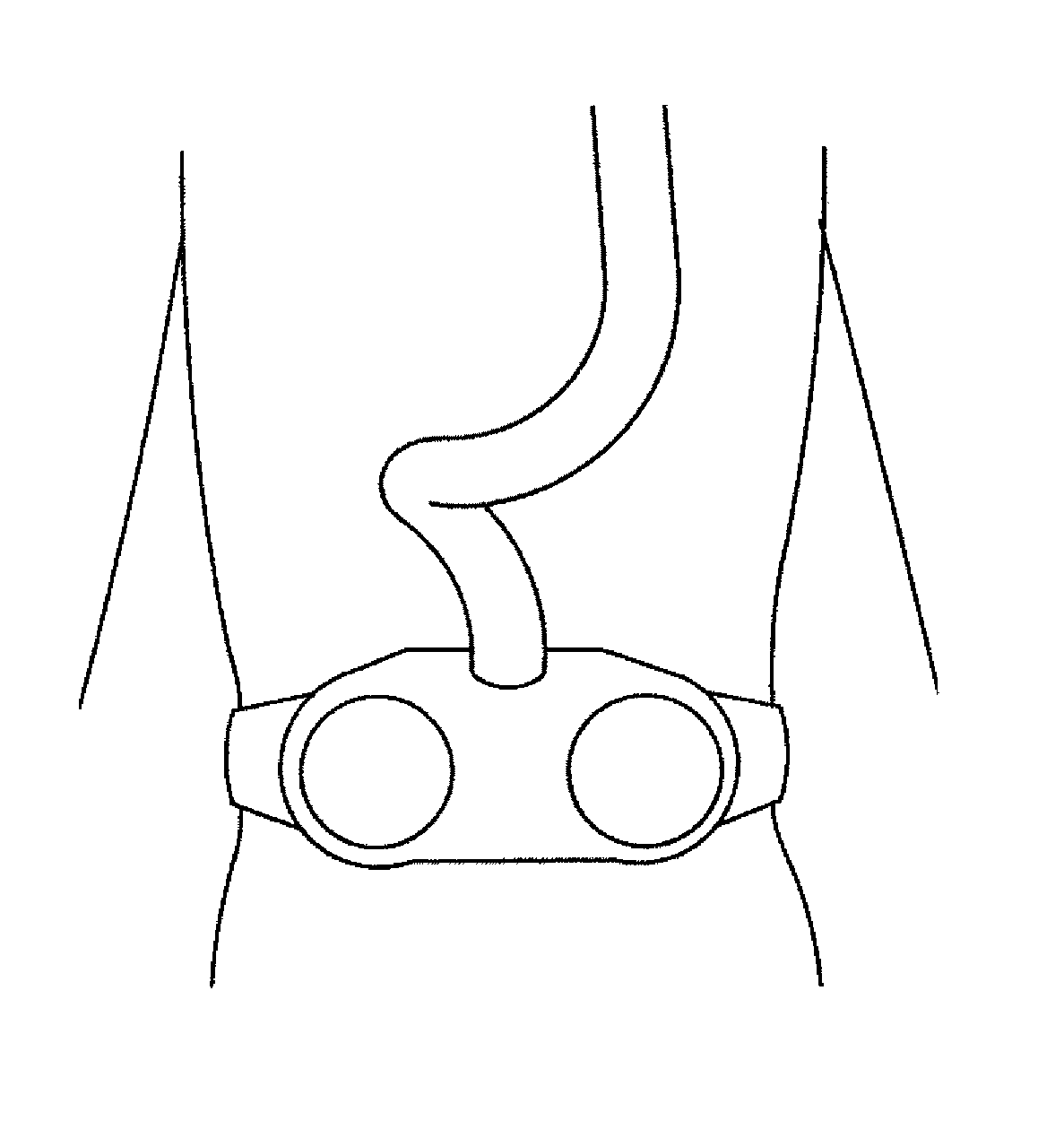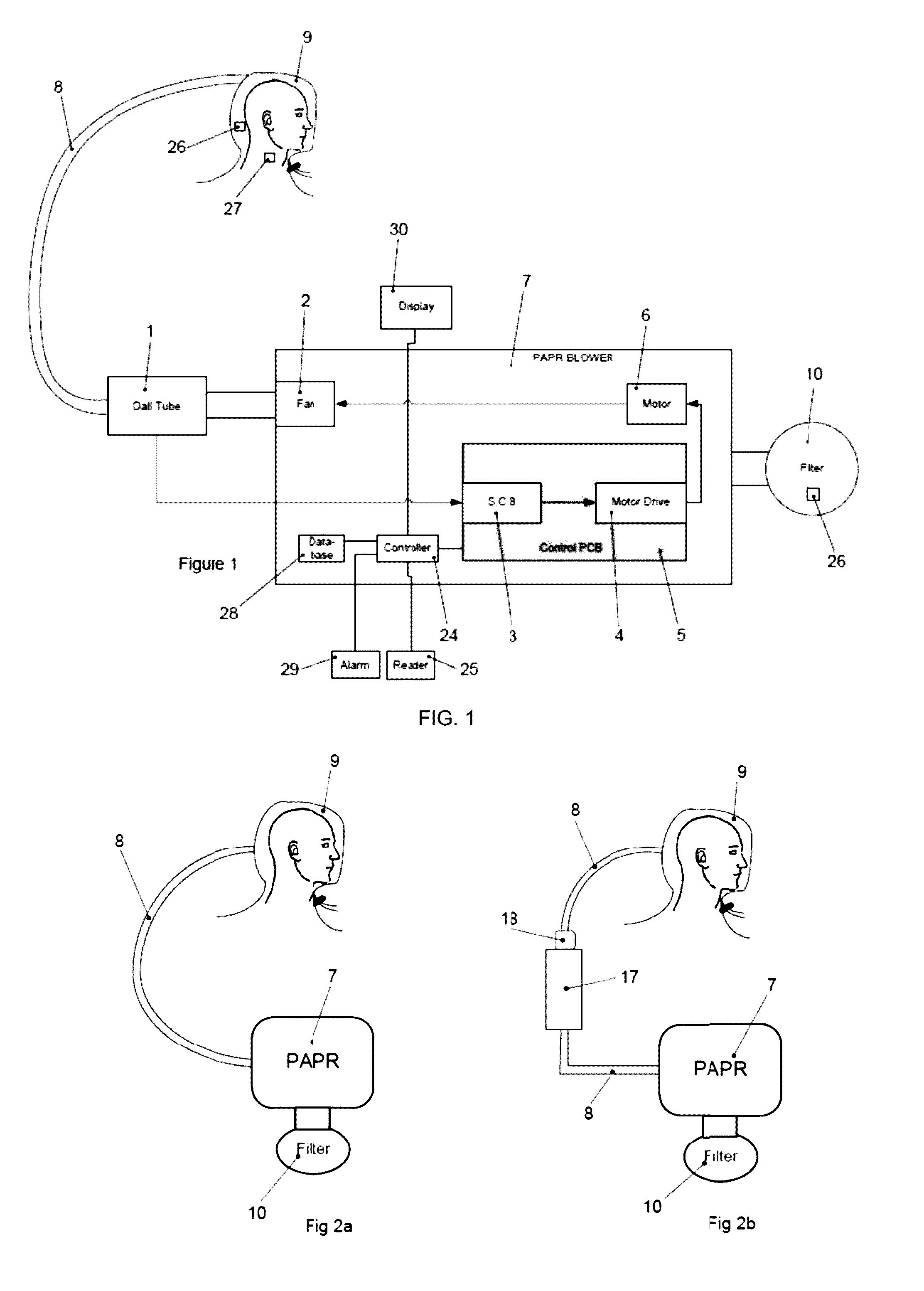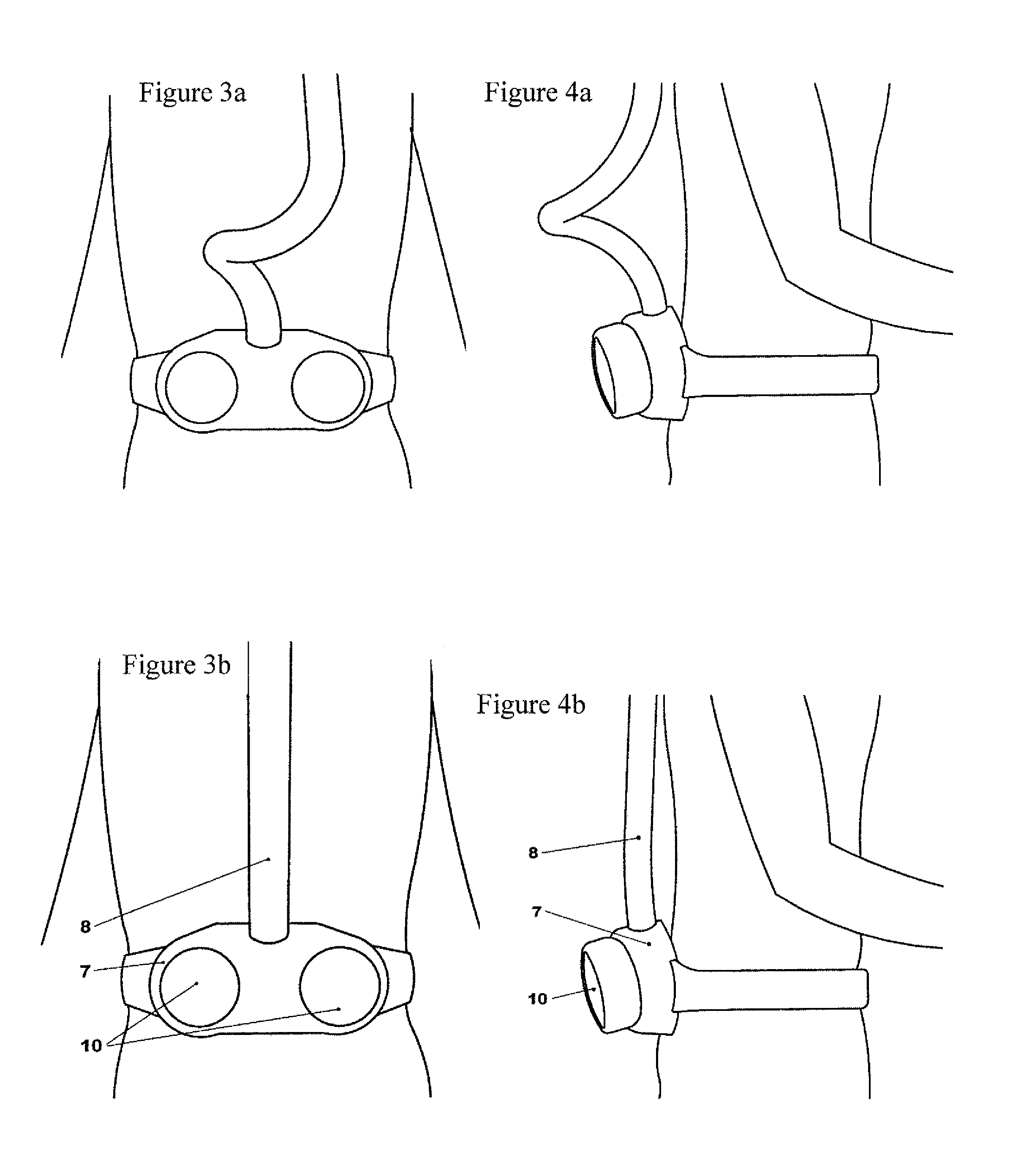Powered air breathing apparatus
a technology of air filtering device and air filtering chamber, which is applied in the direction of respirator, life-saving device, respiratory mask, etc., can solve the problems of increasing resistance through the filter life, fluctuation of flow rate, and maintaining a given flow rate across any combination of accessories, so as to reduce the battery life and the flow rate of battery powered respirators.
- Summary
- Abstract
- Description
- Claims
- Application Information
AI Technical Summary
Benefits of technology
Problems solved by technology
Method used
Image
Examples
Embodiment Construction
[0067]Referring first to FIG. 1, there is shown a Powered Air Purified Respirator (hereinafter PAPR) 7, of a type generally known in which filter(s) 10 are fixed to the PAPR 7 so as to filter air as it is drawn into the PAPR. The PAPR contains a motor 6 that drives an impellor in a volute 2 so as to suck air into the unit and deliver to a headtop / mask 9 via a delivery tube or hose 8.
[0068]Located in line between the impeller and the headtop is a Dall tube 1 which is utilised to monitor the flow rate of air supplied to the headtop. The air supplied by the fan (impellor and volute 2) pulls contaminated air through the filter(s) 10 and pushes the breathable air through the Dall tube 1. The Dall tube 1 (shown in more detail in FIG. 6) has two pressure sensing points—a high pressure sensing point 1a and a low pressure sensing pint 1b, that connect to a pressure differential sensor which sends a signal to a signal conditioning block 3. The pressure differential sensor may be composed of t...
PUM
 Login to View More
Login to View More Abstract
Description
Claims
Application Information
 Login to View More
Login to View More - R&D
- Intellectual Property
- Life Sciences
- Materials
- Tech Scout
- Unparalleled Data Quality
- Higher Quality Content
- 60% Fewer Hallucinations
Browse by: Latest US Patents, China's latest patents, Technical Efficacy Thesaurus, Application Domain, Technology Topic, Popular Technical Reports.
© 2025 PatSnap. All rights reserved.Legal|Privacy policy|Modern Slavery Act Transparency Statement|Sitemap|About US| Contact US: help@patsnap.com



